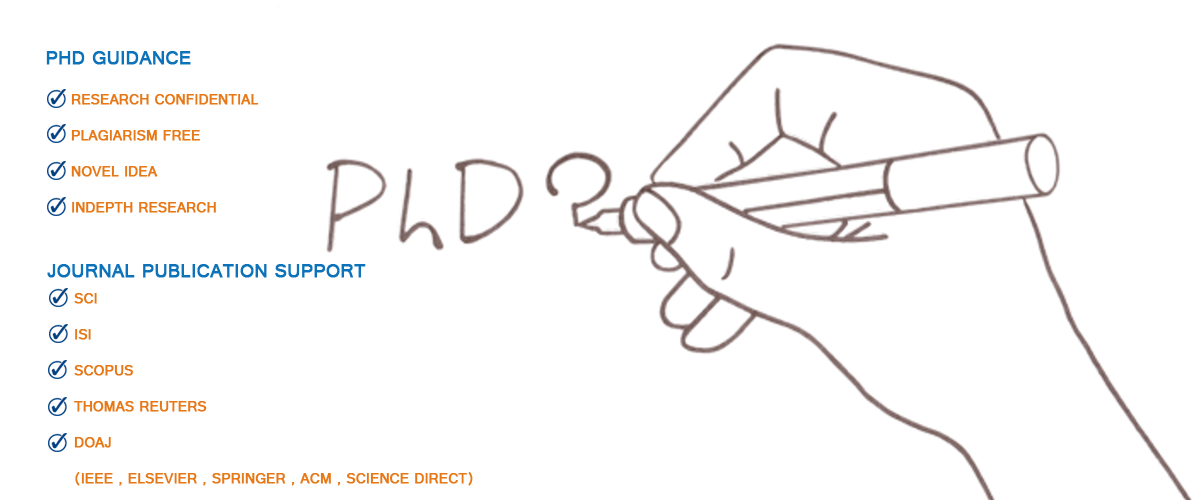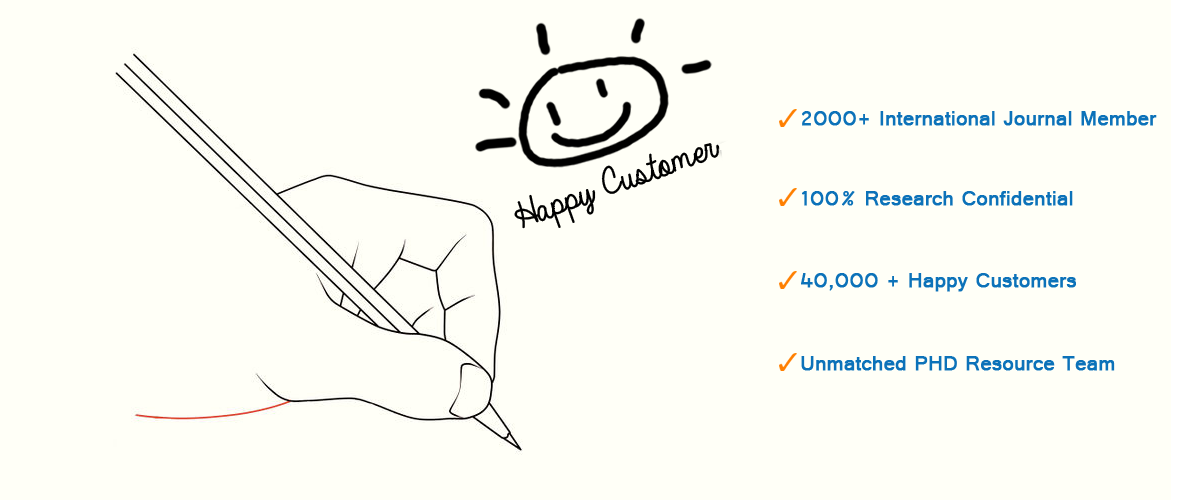In general, UWSN is a wireless linkage of different network entities used for underwater data transmission. And, some of the entities are underwater sensors, sink nodes (underwater and onshore), and surface buoy. In order to extend the communication coverage area, it incorporates autonomous underwater vehicles (AUVs), vessels, and satellites.
This page is equipped with the key information of the Underwater Wireless Communication Project with the latest research areas and ideas!!!
Here, the sensors sense the condition of PHY environs and capture the necessary data like temperature, pressure, etc. Then, the sensed data are transferred to the underwater sink node through acoustic waves. Next, the data is transferred to the surface buoy through physical cables. At last, the onshore sink receives data through radio waves. This is the basic workflow of the UWSN system. For more understanding, here we have provided a short portrayal of important aspects of wireless communication systems.
Overview of Underwater Wireless Communication System
- Relatively, radio waves consume more energy in the case of underwater communication which end-ups in high data propagation loss.
- And, acoustic communication links have minimum bandwidth with the threats of poor connectivity and high bit error rate
- And also, it doesn’t support GPS it uses radar waves (1.5 GHz) which are unable to propagate underwater
- In many use-cases, radio communications are replaced by acoustic communications due to the high propagation delays. Since the acoustic signal has a speed of about 1500 m/s
From the above overview, we hope you get an idea about underwater communication media. To the continuation, now we can see more about the underwater wireless channel. Here, we have emphasized key characteristics of the UWC channel which provides you different advanced research notions.
Description of Underwater Wireless Channel
- Signal is also referred as horizontal channels due to multipath broadcast
- Acoustic signals transmit digital data via underwater channel
- Scalable to design antenna structure
- Constant channel response and predictable
- Flexible and cost-effective to deploy
- Support huge-scale communication range with high data rates
- Acoustic channel is hard to design for underwater communication system
- Support negligible frequency offsets because of Doppler impacts
- Enable negligible broadcasting delay and path loss due to multi-hop relay mode
How does underwater wireless communication work?
In underwater wireless communication, the transmitter sends the data (sonar signal) to the surface along with a small disturbance (vibration of 1 or 0 sec). Then the receiver at the surface captures the data with disturbance and decodes them. This is the process of data sharing from one node to another. And, one more thing is UWCNs comprises autonomous underwater vehicles (AUVs) and underwater sensors for communication which involves the techniques of data sensing, monitoring, and coordinating. Basically, UWSN has two classifications of the network as deep WSN and shallow WSN.
- Deep WSN – support only acoustic waves
- Shallow WSN – support both electromagnetic and acoustic waves
Overall, UWC has a significant role in developing all marine-related applications such as underwater assets investigation, underwater data collection, and environmental monitoring. Although this field has more advantages, still now it faces many hurdles as a consequence of underwater harsh environs and channel characterization. As a result, it causes constrained resource usage, multipath dispersion, severe attenuation, etc. Below, we have highlighted few major limitations of UWC systems based on the current research demand.
Limitations of Current Underwater Wireless Communication
- Optical waves are affected by distributed node deployment but not by attenuation
- Radio waves need high transmission power and antenna but have minimum frequencies (30Hz to 300Hz) to transfer data under the water
- Take account of bottom and surface reflections
- Suffered from biological and ambient noise
- Not efficient in selecting optimal path
As the researchers of underwater wireless communication Project, you have to know the different ranges of communication that are applicable for underwater scenarios. Generally, the ranges are classified as long, short, and medium based on their supportive distance coverage.
Different Ranges and Parameters of Underwater Wireless Communication
- Operational Environs
- Medium Range – Shallow Water
- Long Range – Deep Water
- Short Range – Deep Water
- Communication Coverage
- Medium Range – from 1 km to 10 km
- Long Range – from 20 km to 2000 km
- Short Range – up to 1 km
- Data Transfer Rate
- Medium Range – up to 50 Kb/s
- Long Range – up to 10 Kb/s
- Short Range – Above 100 Kb/s
- Supported Bandwidth
- Medium Range – from 10 KHz to 100 KHz
- Long Range – from 500 Hz to 10 KHz
- Short Range – from 100 KHz to 500 KHz
Next, we can see the different models used in acoustic-based underwater wireless communication Project. Since, currently, many Underwater wireless sensor network applications are utilizing acoustic communication channels for their transmission due to the capability of supporting long-distance communication. For your information, here we have given you only a few of the communication models.
Acoustic Communication Models
- Cylindrical Wave Loss Model
- Operational Environs – Shallow Water
- Source of Signal – Long line Source
- Propagation Loss – Relative to distance
- Spherical Wave Loss Model
- Operational Environs – Deep Water
- Source of Signal – Point Source
- Propagation Loss – Relative to (distance)2
What are the different communication types for UWSNs?
In UWSNs, there exist two primary types of communication where one is wired and the other is wireless. Initially wired underwater communication is established but it is very expensive and challenging for real implementation. To overcome these problems, wireless communication is introduced. Compare to wired communication, it receives tremendous recognition from research and industrial sectors, and still, it is referred to as ever-growing technology. Below, we have given the different wireless media for UWSN systems with their unique characteristics.
- Initially, Magneto-Inductive (MI) and Radio Frequency (RF) communication are largely employed due to its greater data rate capability rate in the near field communication
- In the case of long-distance communication, acoustic communication is more effective than others.
- In the case of constrained line-of-sight positioning, optical communication will yield good performance
Though UWSN communications are advanced in multiple respects, it is still under the clutch of time un-synchronization and transmission losses because of the external influence factors of the environment such as geometry, pressure, transceivers ability, temperature, etc. For your awareness, here we have itemized various communication types with their specifications.
Different Communication Types of Underwater Communication
- Optical
- Data Transfer Rates – < 1 Gbps
- Wave Types – Light
- Frequency – From 1014 Hz to 1015 Hz
- Antenna Size – 0.1 m
- Transmission Area – From 1 m to 100 m
- Communication Area – From 10 m to 100 m
- Broadcasting Speed – 2.2 – 3 x108 m/s
- Features – Support low (energy usage and latency) and high data rate. As well, it enables line of sight transmission, light scattering and ambient noise as channel dependency
- Acoustic
- Data Transfer Rates – < 100 Kbps
- Wave Types – Sound
- Frequency – 100 KHz
- Antenna Size – 0.1 m
- Transmission Area – From 50 m to 10 Km
- Communication Area – Km
- Broadcasting Speed – 1.5×103 m/s
- Features – Support long distance data transmission. And, it includes doppler effect, salinity, temperature/pressure and environ noise as channel dependency
- Radio Frequency
- Data Transfer Rates – < 10 Mbps
- Wave Types – Radio / Electromagnetic
- Frequency – MHz
- Antenna Size – 0.5 m
- Transmission Area – From 1 m to 100 m
- Communication Area – 10 m
- Broadcasting Speed – 3 x108 m/s
- Features – Non-line-of-sight which not adjusted by deep water, noise and turbidity. Additionally, it makes conductivity and multipath as channel dependency
- Magnetic Induction
- Data Transfer Rates – Mbps
- Wave Types – Magnetic
- Frequency – MHz
- Antenna Size – Loop antenna
- Transmission Area – From 20 m to 100 m
- Communication Area – From 10 m to 100 m
- Broadcasting Speed – 3 x108 m/s
- Features – Support minimum path loss and moderate data rate and cost which not altered by multiple path fading. Further, it makes conductivity as channel dependency
From the view of future developments, we found that the Internet of Underwater Things (IoUT) is currently holding hands with a 5G cellular network. As a result, it helps to create a beneficial effect on underwater wireless communication by means of high connectivity, energy efficiency, and data transfer rate. Here, we have bulletined three major technologies of UWC systems which are used in numerous real-world applications.
Different Underwater Wireless Communication Technologies
- Underwater Wireless Electromagnetic Communication (UWEC)
- Delay – Moderate
- Transmission Power – mW to W
- Communication Coverage – < 10 m
- Channel Quality Affecting Elements – Channel Permitivity and Conductivity
- Underwater Optical Wireless Communication (UOWC)
- Delay – Low
- Transmission Power – mW to W
- Communication Coverage – < 100 m
- Channel Quality Affecting Elements – Distributed, Turbidity, Energy Absorption, Channel Organic Matters and Link Suspension
- Underwater Wireless Acoustic Communication (UWAC)
- Delay – High
- Transmission Power – Above 10 W
- Communication Coverage – < 20 m
- Channel Quality Affecting Elements – Temperature, Distributed, Pressure, Channel Energy Absorption and Channel Salinity
In fact, our developers have implemented countless underwater wireless communication projects. So, we are proficient in every aspect of code development like technical background knowledge of topics, recent research advancements, implementation tools, and technologies. Due to our strong technical skills, we are ready to solve any kind of research problem in spite of its complexities.
Use Cases of Underwater Wireless Communication
- Disaster Prediction, Evaluation, Prevention and Rescue in Underwater
- Efficient Data Transmission for Diver-to-Vessel, Diver-to-Diver and Diver-to-Surface
- Cooperative Moving Objects Tracking in Underwater
- Advance Sensing Technique for Underwater Swarming Machines
- Remote Management and Telemetry from Surface / Underwater Devices
- Real-world Underwater Surveillance and Stealth
Research Issues in Underwater Wireless Communication Project
Now, we can see the current challenges of networking layers in the Underwater Wireless Sensor System for Communication. Overall, it has the network architecture design, mobile node localization, and UWCs layers impact problems. Let’s have a quick look over them,
- Application Layer – Development of Enhanced Underwater Wireless Communication
- Transport Layer – Data Flow, Data Reliability, Network Link Maintenance and Traffic Control
- Network Layer – Optimal Routing and Relay Node Selection Techniques
- Data Link Layer – Multiple Access Techniques, Performance Parameters, Link Budgets, and Configurations
- Physical Layer – Modulation, Channel Modeling, and Propagation / Broadcasting Features
In the above, we have provided information on the major operations of networking layers. For an illustration purpose, now we can see about the OSI layers and communication technologies involved in an underwater wireless communication system.
- Physical Layer
- Forward-error correction
- Reed-Solomon and Convolution Codes
- Communication Techniques
- B-CSS and ZP-OFDM
- Forward-error correction
- Data-Link Layer
- Configuration of Network
- Adaption of PHY Layer
- Design of MAC Protocols
- CSMA/CA and ALOHA
- Network Layer
- Internet Protocol Version 6 or 4
- Application Layer
- Sensed Information Management
- SPI support
Numerical Analysis –Different UWC Technologies
For instance, we are providing some numerical values for different UWC technologies and according to the simulation environment and network size, these values are customized.
- Acoustic Wave (AW)
- Depth of Deep Water– 4000 m
- Functional Frequency – 8 KHz
- Depth of Shallow Water – 90 m
- Electromagnetic Wave (EW)
- Conductivity of Fresh Water and Sea Water – 0.01 S/m and 4 S/m
- Dielectric Permitivity – 716.85×1012 F/m
- Functional Frequency – 400 MHz
- Depth of Shallow Water – 90 m
- Magnetic Induction Waves (MI)
- Length – 6 m
- Functional Frequency – 500 Hz
- Copper wire Diameter – 1.45 mm
- Cross-sectional Area – 1.65 mm2
- Copper Electrical Resistivity – 0.01724 ohm-mm2/m
- Radius of Transmitter and Receiver Coil – 1.5 m
- Number of Turns (Transmitter and Receiver) – 1000
From the perspective of theories and experiments, research scholars are motivated to do their Underwater Wireless Communication Project on the advanced research topic. As a matter of fact, underwater wireless communication is a wide platform that is not limited only to radio-frequency, optical, and acoustic communications. Beyond these, our research team will help you find more interesting research areas of UWC. Here, we have given you a list of few creative research ideas of the UWC research field.
Research Trends in Underwater Wireless Communication
- Energy–Aware Realistic Data Transmission in USN
- Channel Coding, Characterization and Estimation
- Statistical Modeling in Underwater Communication
- Multi-Modal and Hybrid Underwater Sensor Networking
- Efficient Signal Acquisition and Processing Mechanisms
- Management of Underwater Devices, Sensors and Systems
- Network Protocol and Cross-layer Design in Underwater Wireless Network
- MIMO and Multicarrier Techniques for Cooperative Underwater Transmission
- Real-time Communication Applications of Underwater Wireless Sensor Network
- Improved Test-beds for Real-time UWSN Experiments and Field Trials
- Channel Estimation assisted Modulation and Detection Strategies for Transceiver
- Game theory and Optimization Approaches for Mobile Underwater Transmission
- Advance Positioning, Tracking and Localization Techniques for UWSN
From our recent research, we identified many of the underwater wireless communication project applications are majorly dependent on the current and growing technologies. These technologies are sure to create a positive impact on the latest technological advancements of UWC systems. For example, the internet of underwater things (IoUT) is furnished with sophisticated characteristics of high energy efficiency, data rate, and connectivity to create remarkable contributions in the field of UWC. For your reference, here we have itemized the up-to-date and wide using technologies of UWC systems
Research Topics in Underwater Wireless Communication
- Internet of underwater things (IoUTs)
- Massive Multi-Input-Multi-Output
- OWC, mm-Waves MIMO and Wireless carriers
- Filter Bank Multi Carrier (FBMC)
- MIMO-OFDM
- Next-generation (5G) networks
- Non-Orthogonal Multiple Access (NOMA)
- Free Space Optical Communication (FSO)
From the above technologies, one can develop any kind of innovative and powerful UWC application plus simulation assignment help. To the great extent, we also support you in other emerging techniques, protocols, and algorithms. Currently, we are working on future technology of 5G networks to enhance the QoE and QoS parameters of mobile technology. For your reference, here we have given you a few samples of 5G enabled Underwater Wireless Communication Projects.
- NOMA based Power Distribution Schemes
- mm-Wave and Massive MIMO for 5G-UWAC
- Free Space Optical communication in UWAC
- MIMO-OFDM based Data Rate Enhancement
On the whole, if you seeking for best research topics and development services then you can find the best solution to avail best services for underwater wireless communication project. We assure you that we meet research expectations within the stipulated period. At the end of project delivery, we provide add-on resources like project execution video, running guidelines, software installation procedure, screenshots, etc.









